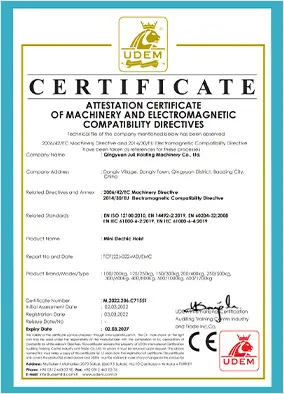


Safety Protective Equipment Ensuring Safety in the Workplace
In today’s fast-paced and often hazardous work environments, the importance of safety protective equipment (PPE) cannot be overstated. From industrial sites to healthcare facilities, PPE serves as the first line of defense against potential injuries and health risks. The proper use and understanding of safety protective equipment are critical in safeguarding employees and ensuring compliance with regulations.
Understanding Safety Protective Equipment
Safety protective equipment encompasses a wide range of gear designed to protect individuals from exposure to various hazards. These hazards can be physical, chemical, biological, or ergonomic in nature. Common types of PPE include helmets, safety goggles, gloves, respiratory protection, earplugs, and safety shoes. By wearing appropriate PPE, workers can significantly reduce their risk of injury and illness.
The Importance of PPE in Different Industries
Different industries present unique risks that necessitate specific types of protective equipment. In construction, for instance, hard hats are essential for protecting against head injuries from falling objects, while steel-toe boots safeguard against foot injuries. In the healthcare sector, gloves and masks are crucial in preventing the spread of infections. In laboratories where hazardous materials are handled, lab coats, goggles, and specialized respiratory masks are vital for minimizing exposure to toxic substances.
Moreover, the importance of PPE extends beyond individual safety; it plays a significant role in promoting a culture of safety within organizations. Employers who prioritize the provision and usage of protective equipment signal to their employees that their health and well-being are paramount. This, in turn, fosters a more engaged and motivated workforce.

Regulatory Standards and Compliance
In many countries, regulations govern the use of safety protective equipment in various industries. For example, the Occupational Safety and Health Administration (OSHA) in the United States mandates that employers provide appropriate PPE to their employees and ensure they are trained in its proper use. Compliance with these regulations is not only a legal obligation but also a crucial aspect of corporate social responsibility. Organizations that neglect safety protocols may face legal consequences, financial losses, and reputational damage.
Training and Awareness
Merely providing PPE is not enough; training is essential to ensure employees understand how to use the equipment correctly. Training programs should cover when to use specific types of PPE, the proper way to wear and maintain it, and the importance of reporting damaged gear. Regular safety drills and refreshers can reinforce this knowledge, ensuring that employees remain vigilant about their safety.
Additionally, organizations should actively encourage a culture of safety by promoting awareness of potential hazards and the importance of PPE. This can be achieved through workshops, safety briefings, and by making safety information readily available in the workplace.
Conclusion
Safety protective equipment is a vital component of workplace safety, significantly reducing the risk of injuries and illnesses. Understanding the various types of PPE and their specific applications can help create a safer and more productive work environment. Compliance with regulatory standards, along with proper training and awareness, is essential for fostering a culture of safety. As industries continue to evolve and new hazards emerge, prioritizing the use of safety protective equipment will be crucial in protecting the workforce and promoting overall occupational health. The investment in PPE is not just an investment in safety; it is an investment in the future of the organization and its most valuable asset—its people.



